At the beginning of 2019, renowned milling machine manufacturer Kunzmann relaunched its line of manually operated universal milling machines, which are particularly popular in vocational training and workshop production. With B&R technology and integrated safety functions such as Safe Brake Test (SBT), Kunzmann was able to reduce axis switching times, save space in the control cabinet and make the machines easier to install and service.
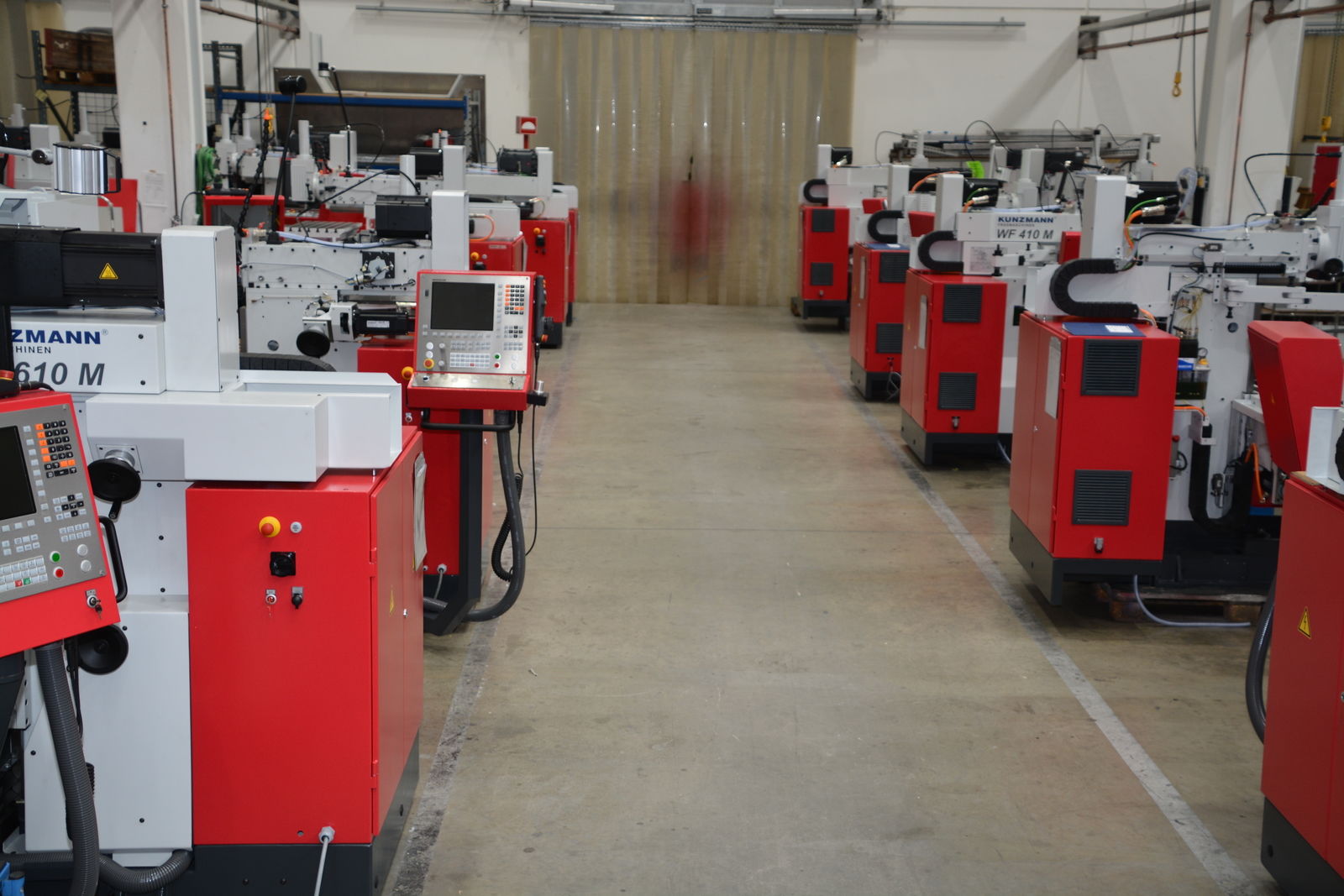
At the end of August 2019, more than 1,600 young trade professionals gathered in the Russian city of Kazan to put their talents to the test at the WorldSkills competition. The world's best millers were crowned in the categories "Polymechanics and Automation", "Manufacturing Team Challenge", "Prototype Modelling" and "Industrial Mechanics Millwright". The competitions were conducted using fifteen WF 410 M milling machines provided by renowned German machine tool builder Kunzmann.
Like its big sister, the WF 610 M, this machine is 100% manually operated. They are known for their long service life, high machining precision and advanced safety features as well as being ergonomic and easy to operate. This makes them perfectly suited for training, prototyping and workshop production. They are standard equipment at many vocational schools and apprentice workshops, but also at many machine tool builders, mold makers and manufacturing OEMs.
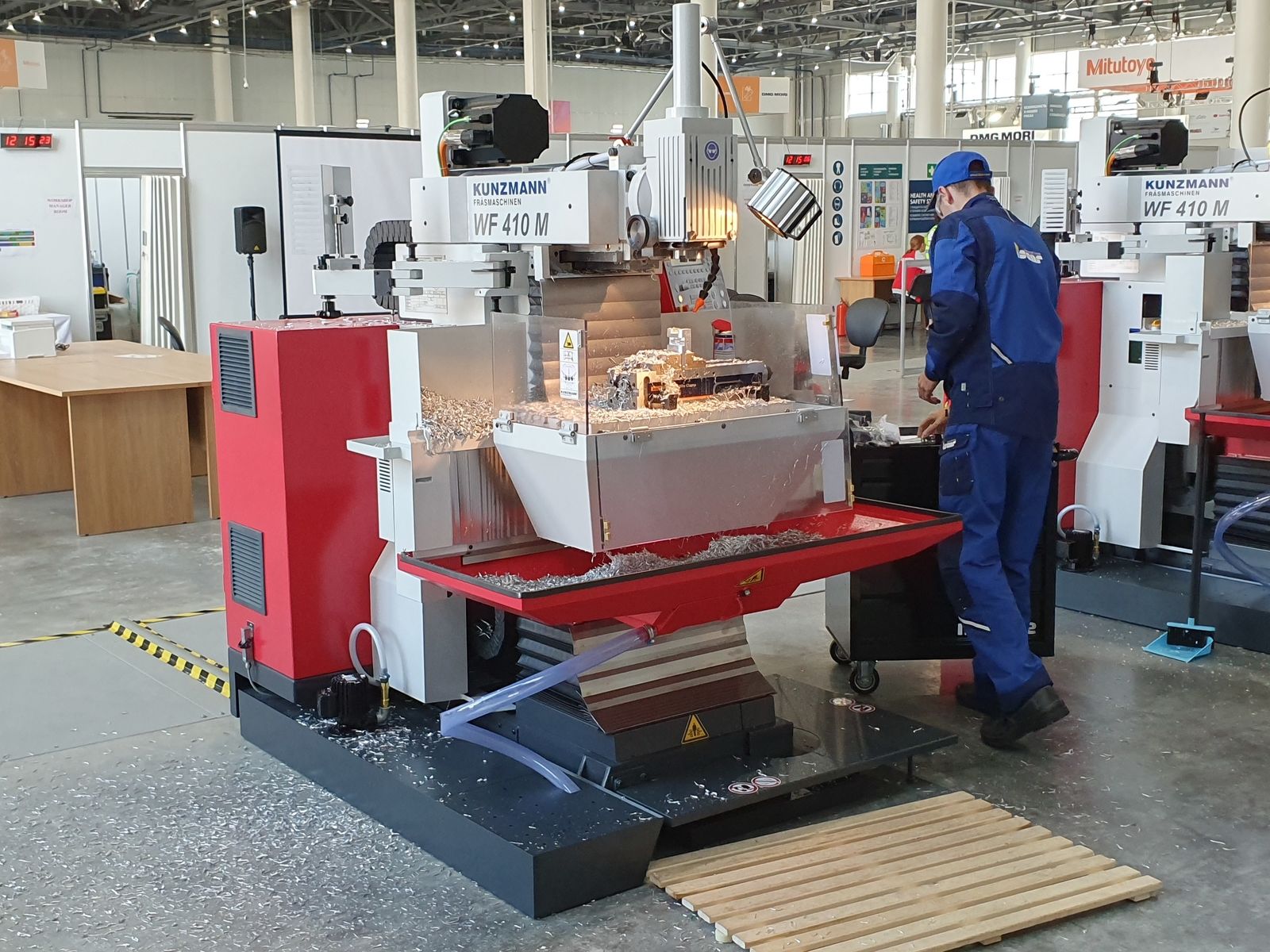
Retooled with B&R drives
Kunzmann implemented numerous improvements when it revamped its milling machines in early 2019. Among them was a switch to a new drive supplier. "B&R prevailed over other providers with its innovative solutions and an attractive price/performance ratio," says Ralf Guthmann, head of electrical design at Kunzmann. "They also scored points early on with their excellent consulting expertise." B&R employees were able to answer the majority of Kunzmann's questions off-the-cuff during initial exploratory discussions. "That's quite different than experiences we've had in the past," reports Guthmann, "In some cases, they had to send as many as four employees to visit us to achieve the same thing. And what B&R presented to us was a quantum leap compared to the previous solution."
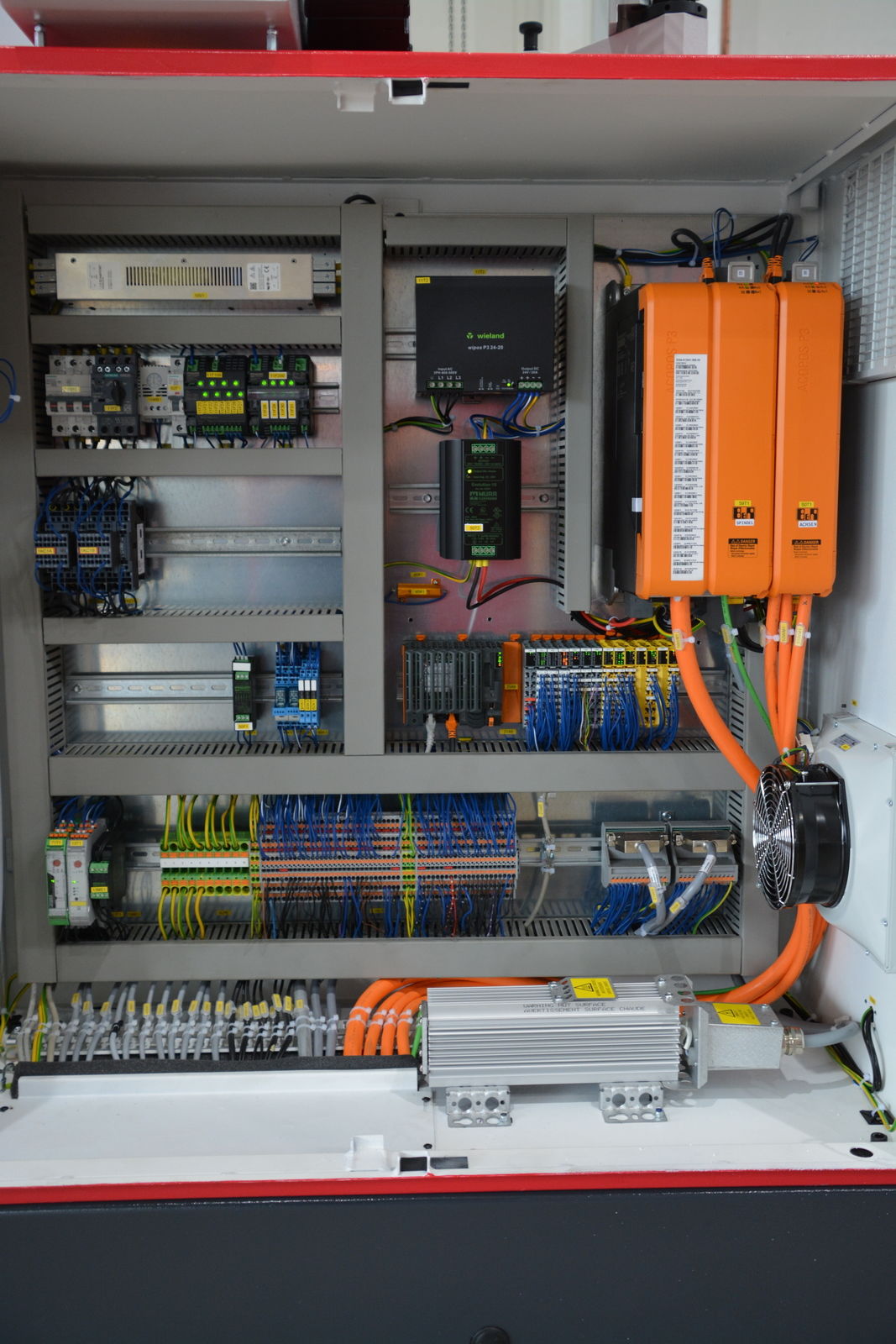
More efficient milling without switchover times
One of the key improvements that Kunzmann achieved with B&R technology is increased milling efficiency. The safety standards for manual milling machines stipulate that it must be impossible to operate multiple axes simultaneously. Until now, Kunzmann had satisfied this requirement by installing only one controller for the three coordinate axes (X, Y, Z). Whichever axis was required for the next machining step was hooked up to this single-axis controller. This effectively prevented simultaneous activation of two coordinate axes. For the user, however, the time it took to switch between axes caused considerable delays in the machining process.
The new generation now uses a three-axis ACOPOS P3 servo drive, so there is no need to switch between the axes and therefore no more waiting for the user. The drive features integrated safety functions, including Safe Brake Test. A PLC from B&R's X20 range, in conjunction with X20 safe I/O modules, reliably prevents simultaneous operation of multiple coordinate axes as required by the standard. The X20 PLC also handles control and monitoring of a single-axis ACOPOS P3 module that drives the spindle of the machine tool. The X20 PLC receives axis setpoints via the analog interface of a Heidenhain CNC controller. The TNC128 functions as the machine's straight-cut controller and user interface.
Dramatic space savings
Another advantage of the B&R solution is the reduced cabinet footprint, as Guthmann explains: "For the first time ever, B&R's integrated safety functions have enabled us to completely dispense with external safety hardware. Together with the compact dimensions of the B&R components, we've significantly reduced the amount of cabinet space required." B&R's three-axis servo drive is smaller than it's single-axis predecessor. Converting the machine to 24 V technology also eliminated the need for a transformer, so the electrical engineers were able to completely do away with the mounting plate in the door of the control cabinet.
Kunzmann's mechanical engineers also benefited from the space-saving design of the B&R solutions. "The B&R servo motors we use on the axes and spindle offer a high power density," explains Guthmann. "This is particularly evident in the case of the spindle, where for the first time we're using a servo motor, which by design is already smaller than an induction motor. And since the B&R motor also doesn't require a fan, we've cut our overall space requirements nearly in half." This is not the only design benefit from his point of view: "What impressed me right away and made my job a lot easier was that the B&R offer included a link to technical documentation and CAD data for each product. That's an immense help for designers."
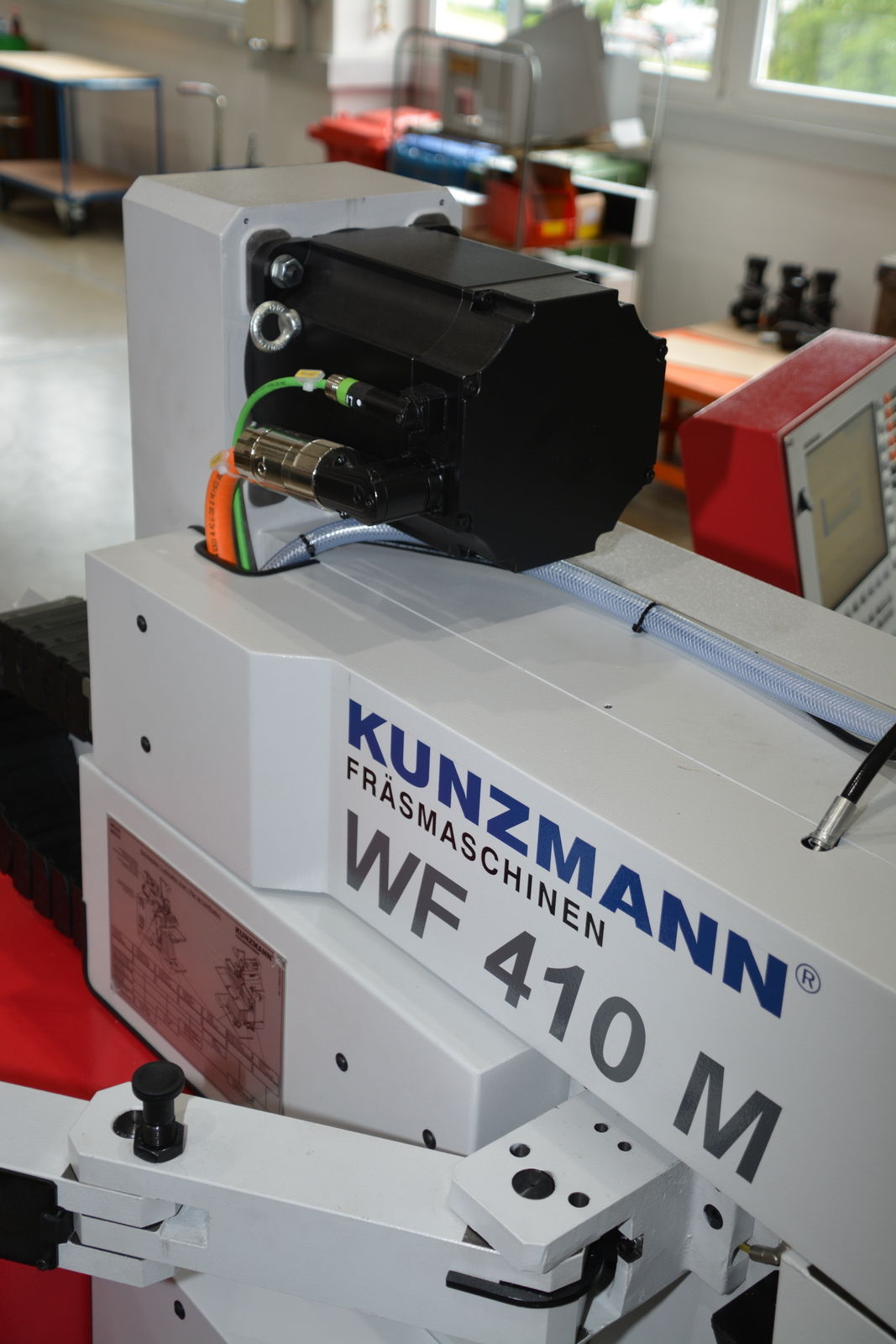
Fully assembled system ready for installation
Kunzmann experts were very pleased with how B&R's application engineers handled the tasks of selecting the components, sizing the drives and programming the PLC. But that's not all. B&R also assembles the milling machine control system, comprising twelve X20 modules, then installs the software, labels the station and finally tests it. "We then purchase a package that includes all the B&R components we need for six machines at a time. That's a significant relief for our internal ordering, assembly and testing processes," says Guthmann.
Last but not least, the change of supplier and the new automation technology from B&R have also made the manual milling machines easier to service and maintain. "The X20 modules consist of three modular components, so it is possible to replace just the terminal block, electronics module or bus module without having to dismantle the rest of the system. It's a really well thought-out solution." Kunzmann can also access the web server of the X20 PLC directly from the Heidenhain controller's integrated web browser to retrieve diagnostic data from B&R's System Diagnostics Manager (SDM). This makes it possible to perform remote maintenance on both the Heidenhain controller and the B&R system via the TNC128's TeleService. "We don't need another PC on site for this and don't have to install any special software or program anything," says Guthmann. B&R's SDM delivers data about the current state of the drives, such as the current speed, position and controller enable values. It is also possible to open and operate the oscilloscope integrated in each drive via SDM, or use its I/O viewer to display the current states of all the I/O channels in the B&R system. This shortens commissioning times by eliminating the need for time-consuming I/O wiring tests.
Transition done right
For Kunzmann, the bottom line is that introducing B&R technology has made it easier to ensure the high level of safety that users have come to expect from their milling machines, while giving them unprecedented design freedom and making the machines much easier to install and maintain. For users, the transition was a seamless one. "Since shipping the first pilot machine in the fall of 2018 we haven't received a single bit of negative feedback. That's a good indication we did everything right."
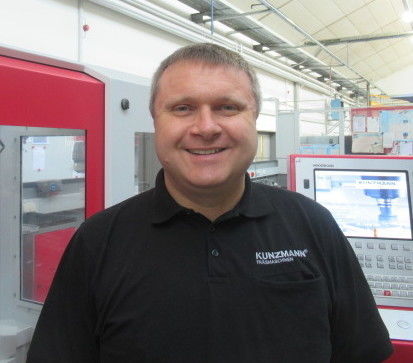 | Ralf Guthmann Head of Electrical Design, Kunzmann "B&R's solutions and services are well thought out and simplify the installation, commissioning and maintenance of our milling machines." |